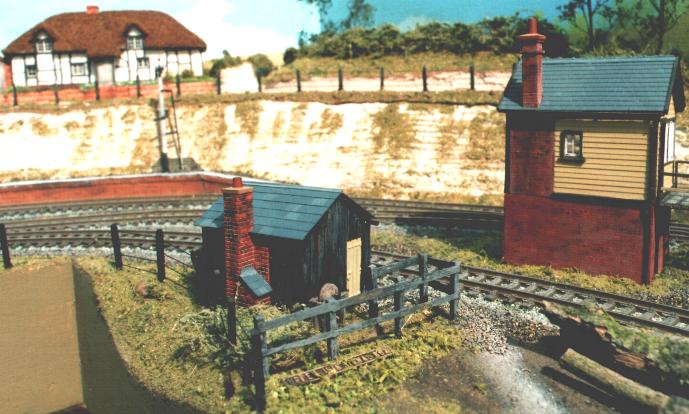 |
"Standing on the road opposite the signal box
the faint "ting" of a block-bell
would send a shiver of anticipation through any keen railway enthusiast."
indent Sat in the fork between the main
line and the yard, Upper Isis Signal Box controls all the movements in and out of the
station. (Owing to the wartime removal of any nameplate which might conceivably
help the threatened German paratroopers, the huge cast iron sign reading "Upper Isis
Signal Box" has been removed from where it could be seen from the road and now lies
among the weeds in the foreground. Despite the fact that said paratroopers might
actually have had the forethought to come with a map or two, the British Authorities did
thus manage to prevent British servicemen posted to unfamiliar locations getting out at
the right station with alarming regularity...)
indent Behind the sign is some fencing round an open drainage
channel and behind that the ubiquitous platelayer's hut. The cream-painted door is
unusual (the window frame is the same colour), but examples of this treatment can be seen
in period photos, Congresbury in Somerset being one of them!
indent Both these models are from kits, the former by Ratio and the latter by Coopercraft. Both are almost standard but we have added an extra window at the rear of the signal box (it would seem rather lifeless without it), and moved the window in the platelayer's hut from the rail side (where you wouldn't see it) to the far end. The path between these buildings from the station to the goods yard is well-used by the look of it! In fact the signalbox has been carefully positioned to distract attention away from the fact that trains disappear completely once they've gone under the road bridge. This might be less necessary if the scenic break were a tunnel mouth but very few branch termini were approached through an expensive-to-build tunnel. Only two exceptions spring to mind and they were both on the Southern; one at Brighton and one on the Isle of Wight. Most Great Western branches ended up either in the foothills of a higher tract of land or down by the sea-side.
| Previous photograph in series | Back to "Upper Isis Room" entrance | Next photograph in series |